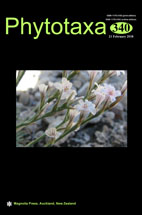Abstract
Heydari Wildlife Refuge (HWR) is located in Binalood mountain range of the Razavi Khorassan Province in Northeastern Iran. The area belongs to the central part of Khorassan-Kopet Dagh floristic province, which is a transitional zone between different phytogeographical units in the Irano-Turanian region. We investigated the floristic composition, life-form spectrum and the phytogeography of the area during 2014–2017 by collecting vascular plants and establishing 443 random-quadrats in representative stands of different vegetation types. A total of 588 vascular plant taxa (species and subspecies) belonging to 304 genera and 65 families are recorded as native and naturalized in the study area. The richest plant families are Asteraceae (40 genera/87 species), Fabaceae (15/72), Poaceae (33/60), Brassicaceae (33/49), Lamiaceae (19/32), and Apiaceae (18/27). The genera Astragalus (44 species), Cousinia (17), and Allium (10) are the richest ones. However, the dominant canopy cover belongs to Acantholimon, Astragalus, Artemisia, and Acanthophyllum species. Raunkiaer’s plant life-form spectrum in the area is dominated by hemicryptophytes (41.50%) and therophytes (28.06%). The core flora of HWR has the Irano-Turanian origin; the widespread elements are also well represented in the study area. Based on the Sørensen dissimilarity index, the HWR has about 50% dissimilarity to the adjacent areas. The study area is inhabited by several Iranian and/or Khorassan-Kopet Dagh endemic (19%), threatened (16%), and narrow-range plant species. The results indicate the importance of the HWR in the plant diversity of NE Iran.

